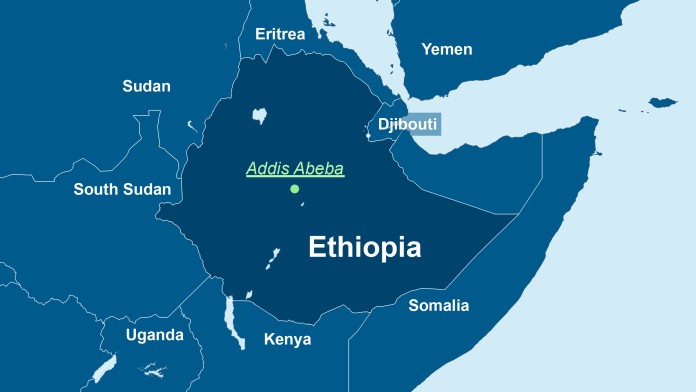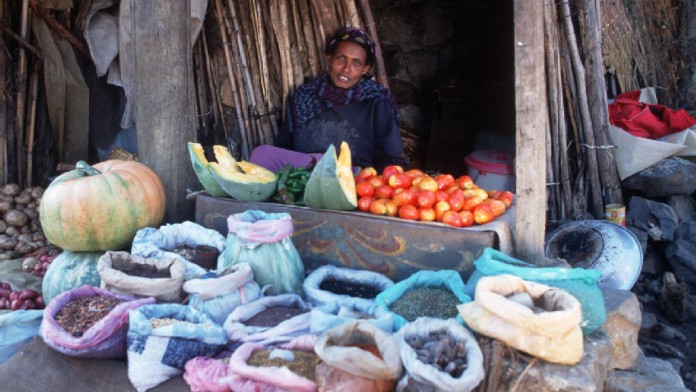
As of: 09/2022
Ethiopia has a wide variety of species, many of which only exist in this region of the world. This also includes various wild varieties of today’s crops. These, as well as all of the country’s other natural resources – including water reserves – must be protected in order to be preserved. This is because the population in Ethiopia is growing very quickly and, with it, the desire for land and water. This leads to conflicts of interest and significant pressure on resources, including protected areas. KfW is supporting the Ethiopian national park administration and local authorities in better managing protected areas while closely involving local residents. This can balance out the different interests and serve to improve people’s living conditions.

Ethiopia’s biodiversity is unique and of international importance. Protected areas are set up to secure this biodiversity. Today, around 14% of the country’s national territory is comprised of national parks and wildlife or biosphere reserves, which corresponds to a total of around 187,000 square kilometres. However, people also live in the protected areas, and the local population uses the natural resources there. These people are among the poorest in an already poor country. The protected areas in the highlands, where several large rivers originate, also secure the water supply to the dry lowlands.
Despite the protected areas, biodiversity has declined sharply in Ethiopia in recent decades. This can be traced back to the fact that the state-owned Ethiopian Wildlife Conservation Authority has just enough funding to pay the basic salaries of its employees and maintain basic functions. The protected areas’ administrations have not yet been able to involve the local population in the management of the protected areas. However, it is important to combine the protection of nature’s resources with their actual use in order to preserve biodiversity in the long-term and to provide people with prospects.
KfW’s project is supporting the Bale Mountain National Park, the Simien Mountain National Park and the local residents there on behalf of the Federal Ministry for Economic Cooperation and Development (BMZ) with an initial amount of EUR 20 million. These are Ethiopia’s two most famous conservation areas, which are simultaneously of global importance. The funds will be used to enhance the training, equipment and machinery of administrations and gamekeepers, for example through clothing, laptops, GPS devices, tents and vehicles for rangers. The maintenance of trails and the construction of administrative buildings, fences and outposts will facilitate the management of protected areas in the future.
All of this is intended to help reduce the unregulated use of natural resources in the protected areas. However, this only works in collaboration with the local residents. Without involving and supporting them, it is not possible to effectively protect the parks and their biodiversity. This is why the administrations of the national parks are now coordinating with them on seasonal grazing, harvesting honey and coffee, and collecting medicinal plants. In future, the parks will have core zones in which use is largely eliminated. In other areas, however, herders can still graze their livestock or find limited wood, fodder grass and wild plants.
KfW is implementing the project in close cooperation with Frankfurt Zoological Society and the African Wildlife Foundation, which contribute their own funds and are committed to the protected areas over the long term.
The park administrations have introduced professional management geared towards environmental and social standards, a process that was previously unique in Ethiopian conservation. The measures are having an effect. There are fewer incidents of uncontrolled or illegal use. More patrols and a better system for monitoring and supervising the protected areas have contributed to this. The fact that the local population is more involved in the management of the parks also helps to uncover illegal activities.
A core zone of 234 square kilometres that are free from human use now exists in the Harenna Forest in Bale Mountain National Park. This zone is also respected. Compliance with agreements between parks and municipalities is largely ensured. Local residents present their concerns in dialogue forums. The administrations of the national parks involve the local population and include them in the protection measures instead of implementing sanctions as was previously done. This helps to defuse conflicts rather than fuel them and can also serve as a model for other parks.
In 2021, Ethiopia submitted documents to UNESCO so that the Bale Mountain National Park can be declared a World Heritage Site. Another success is that – not least because of KfW’s support – UNESCO has removed Simien Mountain National Park from the Red List of endangered World Heritage Sites.
The project will make progress towards achieving the following SDGs:
KfW Group
KfW Development Bank
+49 69 7431-9267